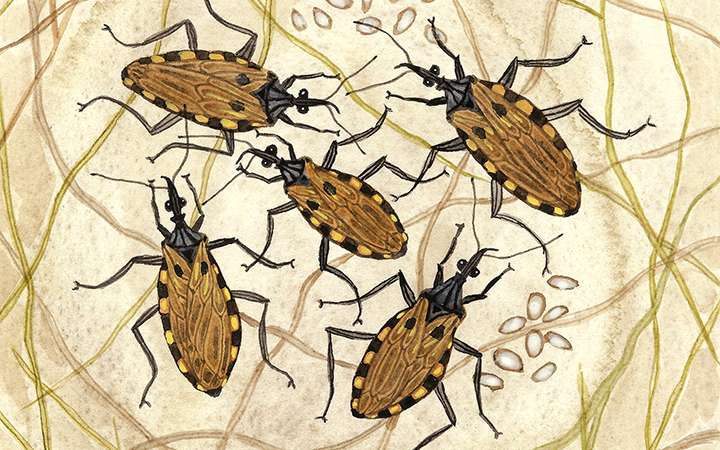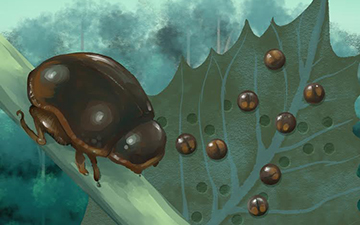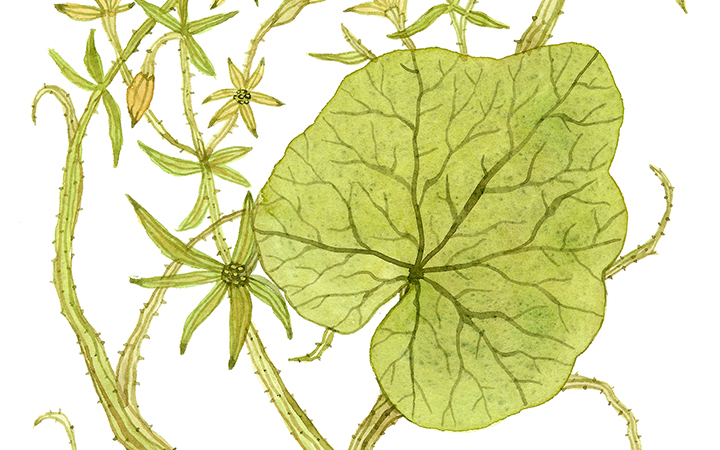Cards
(QUICK LINKS: Decks | plants | mammals | birds | | reptiles | fish | cephalopoda | insects | microbe | events
( scientist | project | modifier | technique |)

Vinchuca
Triatoma infestans



6 POINTS
Play: The vinchuca has a MOVE of 2.
“It is most disgusting to feel soft wingless insects, about an inch long, crawling over ones body; before sucking they are quite thin, but afterwards round & bloated with blood.” Darwin on the Vinchuca, 1835

Zooplankton
Marine zooplankton


1 POINTS
Play: Zooplankton has a MOVE of 1.
“Many of these creatures so low in the scale of nature are most exquisite in their forms & rich colours. — It creates a feeling of wonder that so much beauty should be apparently created for such little purpose.” (Darwin on plankton).

Baobab Tree
Adansonia digitata



2 POINTS
Fact: During the voyage, the observation of this tree (which can grow to be 6000 years old), is thought to have made Darwin ponder the long timescales in the Earth’s geology.

Giant Kelp
Macrocystis pyrifera



3 POINTS
Fact: Darwin is thought to be one of the first scientists to consider the ecological importance of kelp comparing them to an aquatic version of a forest of trees.

Leaf Letter Flea Beetle
Aulonodera darwini


4 POINTS
Play: This Flea beetle has a MOVE of 2.
Fact: This is one of four Australian insect species, collected by Darwin during the Beagle voyage, that bear his name.

Sicyos villosus
Cucurbitaceae Sicyos villosus


2 POINTS
Play: This plant is EXTINCT.
Fact: Darwin’s single dried specimen of Sicyos villosus, collected during the Beagle voyage, appears to be the only piece of evidence that showed this plant ever existed.